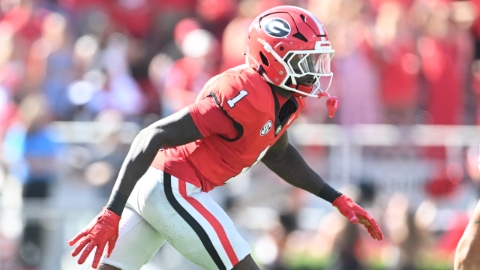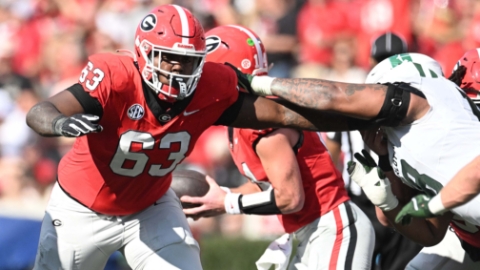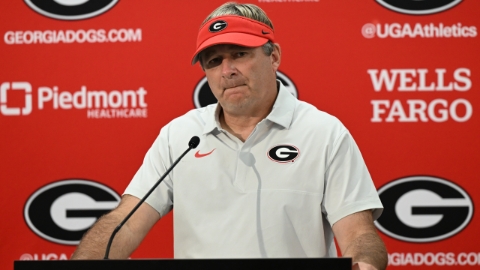
DON’T MISS OUT: Get our insider newsletter today!
ATHENS - It is fair to say that the Georgia Bulldogs’ football program has seen a noticeable shift in its on-field performance in Kirby Smart’s first 6 years as the head coach.
The Dawgs have gone from a good, or solid, program to a perennial contender due to what can only be attributed to a culture change in the football program. Going from an 8-5 first season to the national championship in his 6th season Kirby has shown that, to be a perennial contender, the entirety of the program must be in lock step in order to achieve lasting and consistent performance. LSU is the most recent example of catching lightning in a bottle, and how unsustainable that approach truly is.
Kelsey Miller writes in Harvard Business Review that 50% of all organizational change initiatives are unsuccessful. That’s in the business world. I’ve been through organizational, or cultural, change while in the military. Some were at the unit level, while others were enterprise wide. Some worked better than others, while some change approaches were abject failures. When I look back on what determined success versus failure, it becomes apparent that some efforts were ideas without substance while others were rooted not only in belief but in a process. Defining what you want your organization to be along with the steps to take to achieve that endstate is critical. As we look at Kirby’s tenure so far, I think the evidence exists that the cultural changes he’s implemented are long duration changes that will survive the whims of college football.
Buy Dawgstruction - today, and get our season preview included with your purchase.
Supplies are limited - CLICK HERE TO ORDER NOW
Organizational change refers, in a broad sense, to the actions an organization takes to change or adjust a significant component of the organization. This change can be adaptive (small, gradual changes) or transformational (large in scale and scope). Further, there are 5 generally accepted steps to an organizational change management process. They are 1) prepare the organization for change, 2) Craft a vision and plan for change, 3) Implement the change, 4) Embed changes within the organization culture and practices, and 5) Review progress and analyze results. These steps are not necessarily sequential, and in Kirby’s case, seem to be a continual process.
The major changes I can see are facility improvements, recruiting operations, and strength and conditioning. Each one of these is important on its own but combined together present a focused approach to what type of program Kirby wants to be known for. If you refer back to the five general change steps above, it’s obvious that Kirby had a vision and sold it. He sold it to the recruits. He sold it to the athletic department and the university administration. And finally he sold it to a rabid, hungry fan base that generated monetary donations to make his vision a reality. The order of magnitude of donations and the speed at which the athletic department brought the facilities up to par, and further, is staggering. While facilities may not be the one thing recruits make decisions about, it’s certainly a key factor. It’s also a factor for current players as they see the investment in their athletic and academic lives.
Recruiting operations have also seen a similar seismic change. Mark Richt recruited decently, but the focus Kirby puts on the operation itself is noteworthy. The support staff has grown, no doubt. But it’s the evaluation process of potential recruits that marks the true organizational change. I’ve seen recent data that shows that Kirby has the highest percentage of 3 star recruits that get drafted into the NFL (32.2%). This shows that the evaluation of players like Tae Crowder, Jordan Davis, and Erik Stokes is outpacing the rest of college football. This recruiting operation also identifies those players that will best fit the Georgia culture as well as those players who could potentially be added via the transfer portal. It’s a slick operation that’s truly the heartbeat of the program.
The strength and conditioning program has also seen a revamp that was sorely needed. I don’t know the specifics of what Scott Cochran does in the weight room, nor do I have any insight into what the nutrition staff does for each individual player. It’s obvious, though that the results of those changes have been borne out on the field. And it’s not just obvious in the starting 22. The second and third-team players are also held to the same standard, and it shows. The physical transformation that we all see from recruiting highlights in high school to the product that takes the field in Sanford Stadium is stark. These kids, in many cases, are reshaped and honed into incredibly strong and fast players because of the focus of the program and the efforts of the staff. This effort enables high level play week in and week out.
Finally, Kirby’s mantra – connection, toughness, resiliency, and composure – is evident throughout every fiber of this program. It’s on a huge board inside the Payne Indoor Facility (House of Payne). In almost every press availability, you hear Kirby using those words. He has embedded these concepts in everything the program does. You can tie each of these words or concepts into each of the culture change examples above. You hear the players themselves using these words. This is step 4 of the organizational change process. Connection was added last year based on exiting player feedback. And there you have step 5 (review and analyze results). Kirby, and by extension his staff and players, exude these concepts, showing how the culture of Georgia football has changed during his short tenure.
While each of these examples of culture change won’t necessarily lead to a College Football Playoff championship every year, they definitely position Georgia to be at or near the top each season. With this culture change, you won’t see the drastic falloff ala 2020 / 2021 LSU. I have zero clue what to expect from the 2022 version of the Dawgs on either side of the ball. Will the offense be as slick as some think (hope) it can be? How far from last season’s historically great defense will this version be? I don’t have answers to either, but I’m damn sure looking forward to seeing how this team progresses each week. This culture that Kirby has established leads us to expect that the team will play hard and will bounce back from adversity better than most. We know they’ll play tough and will strike the opposing team relentlessly. We know they’ll be hunting instead of sitting back being the hunted. That’s the Dawg culture.




